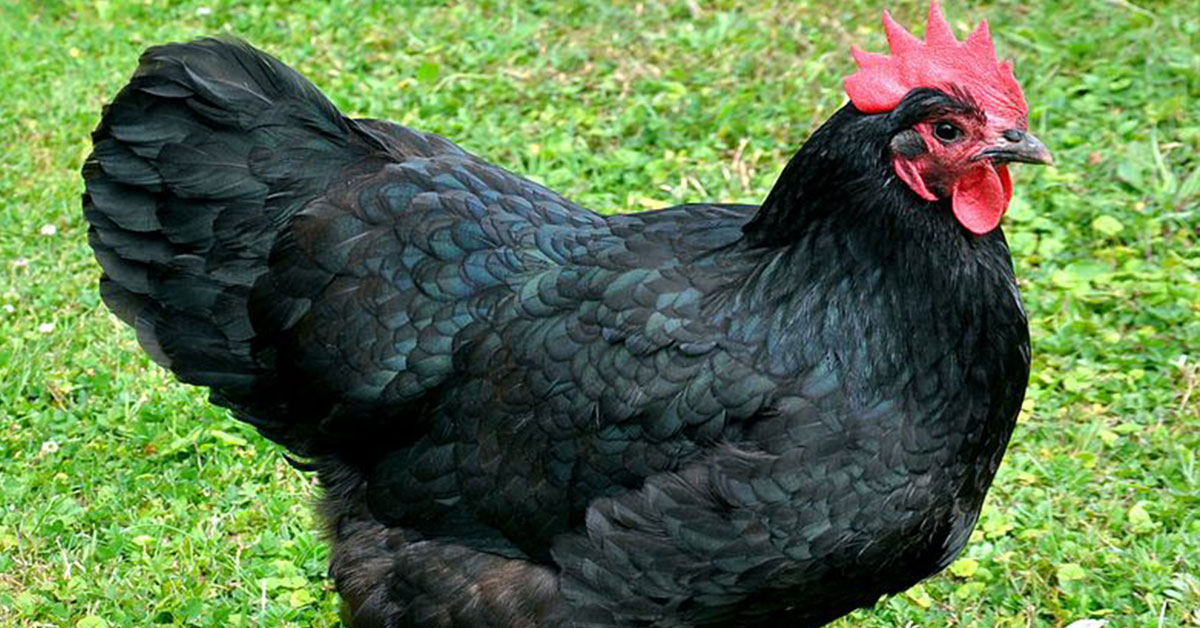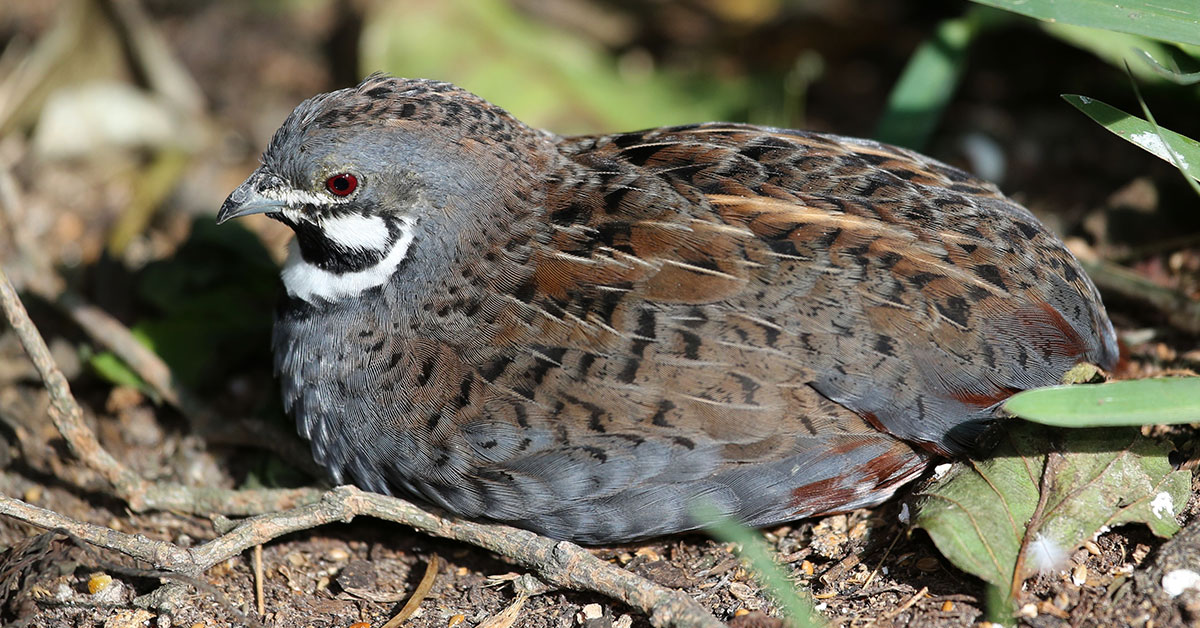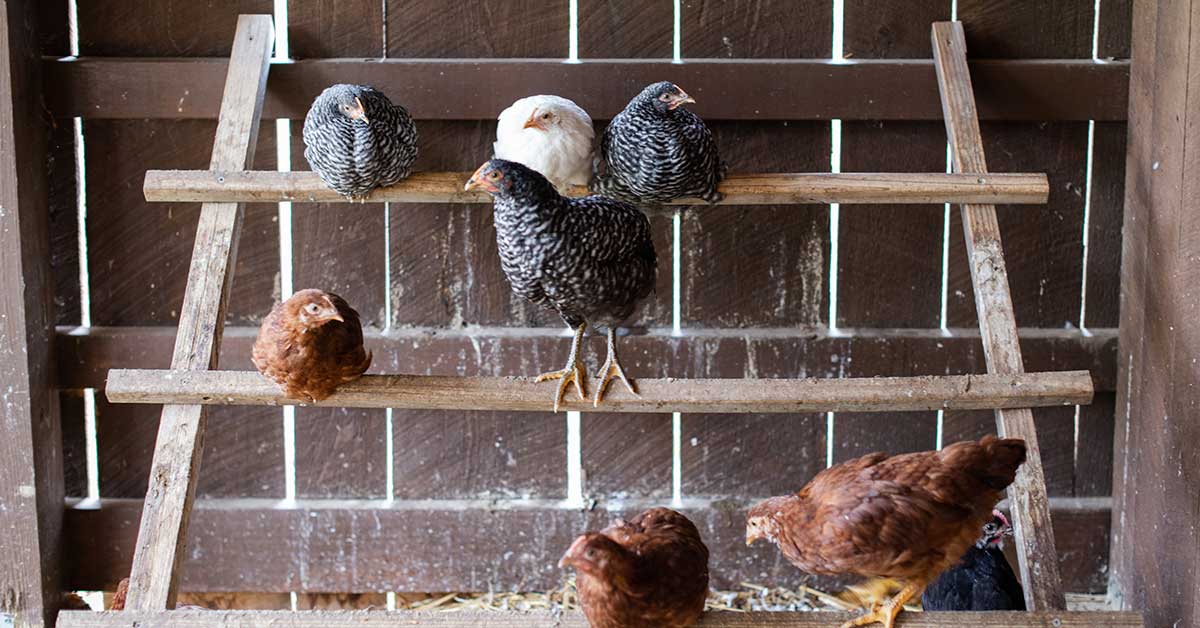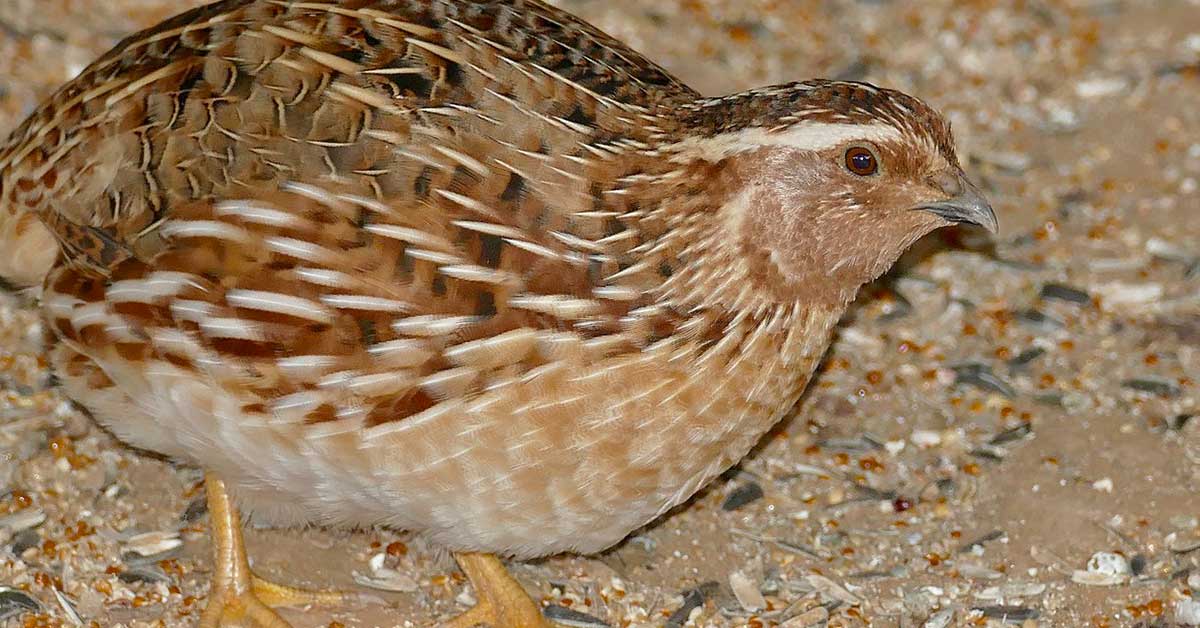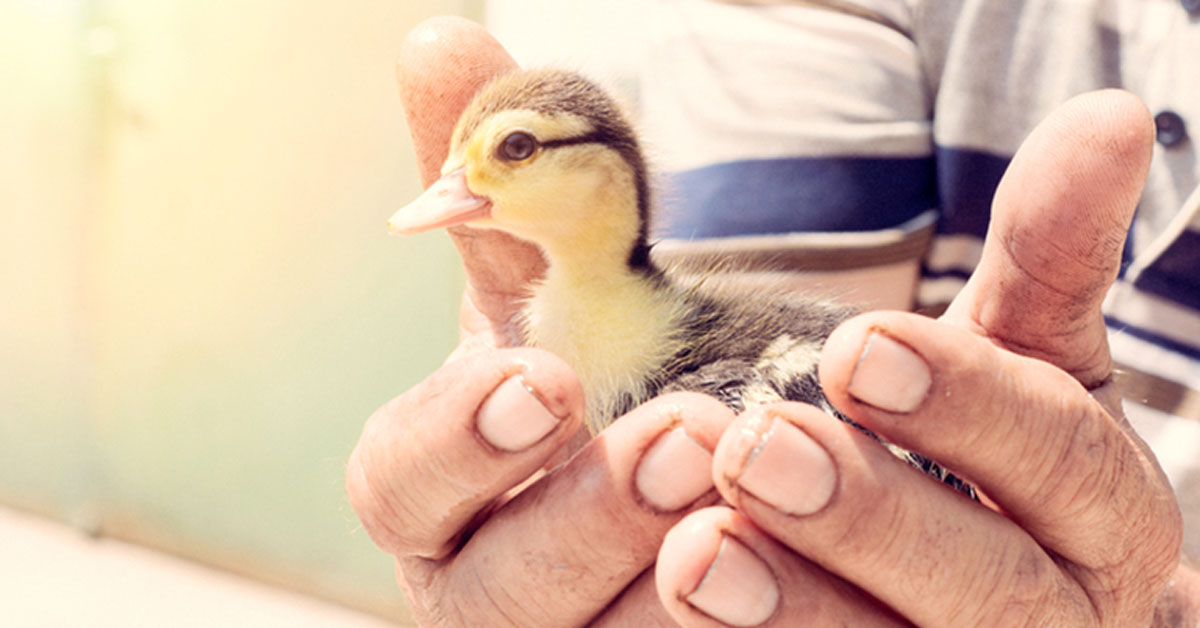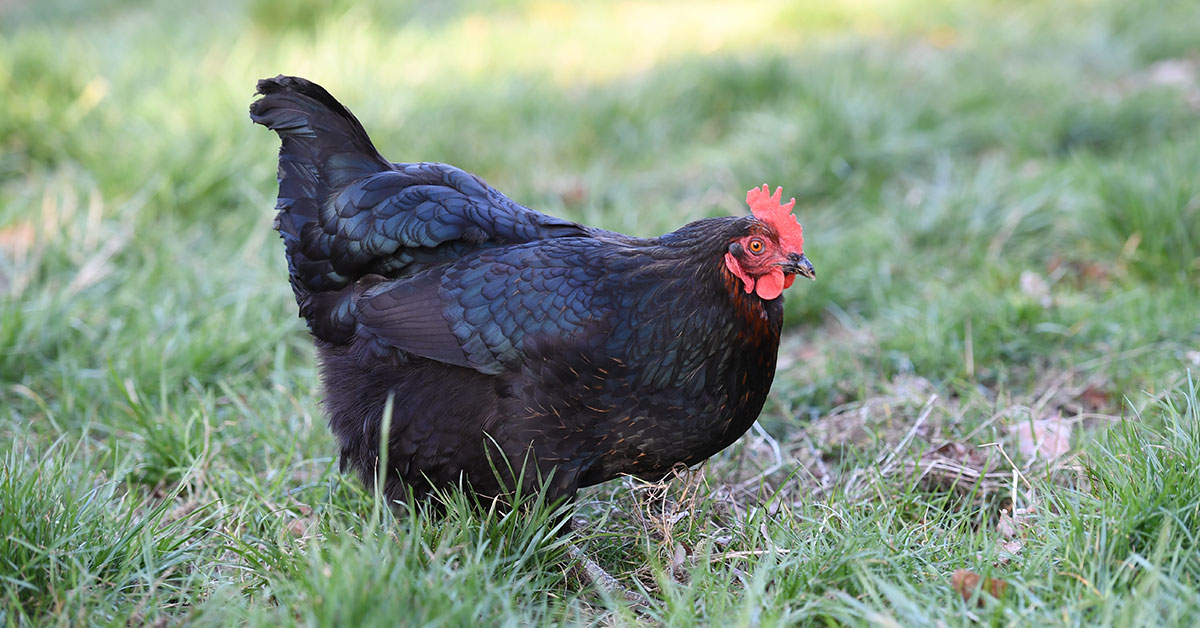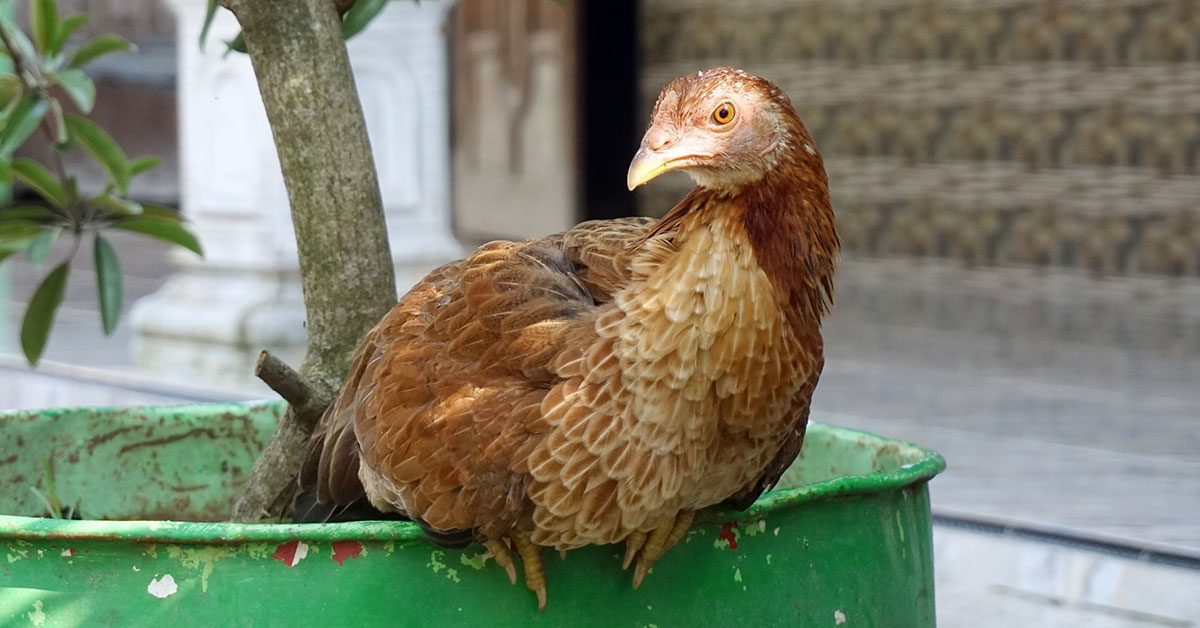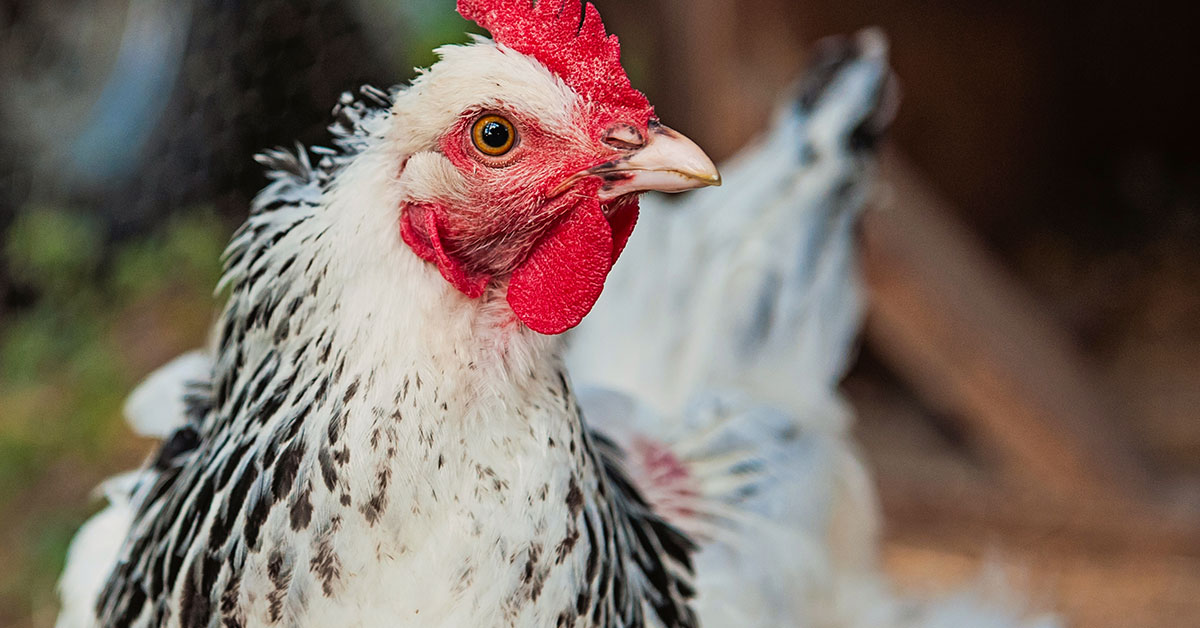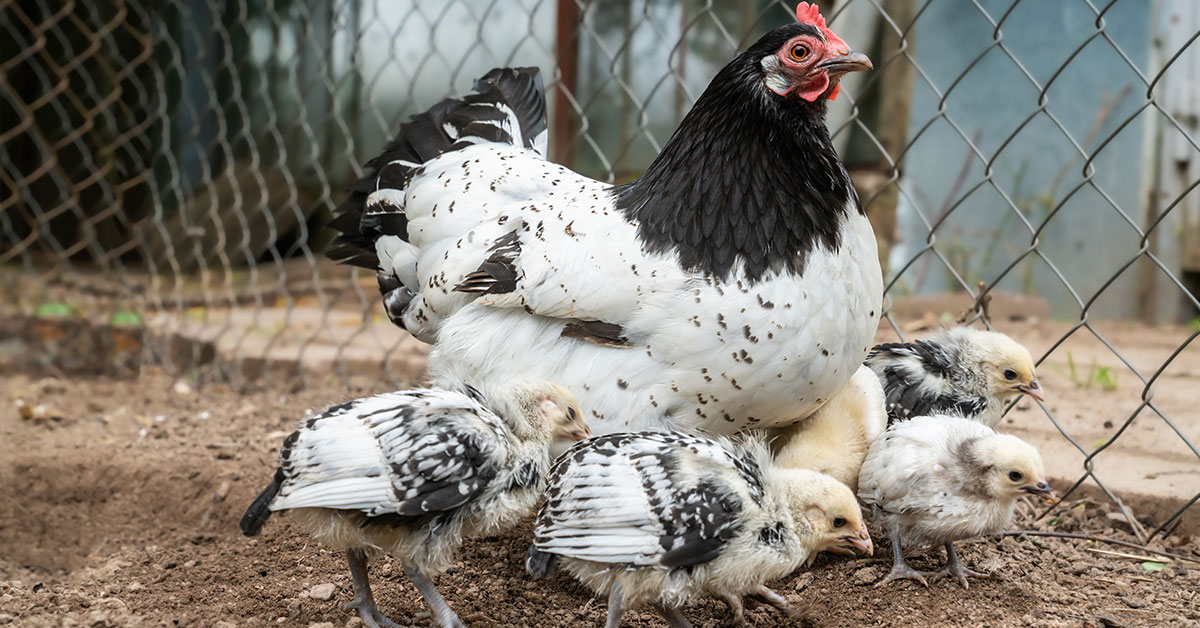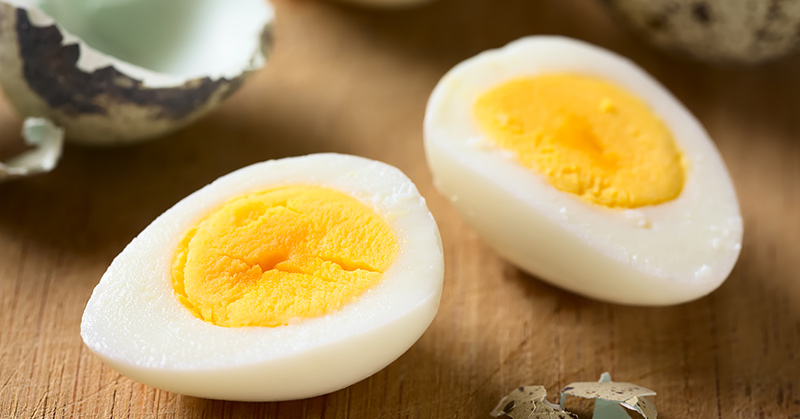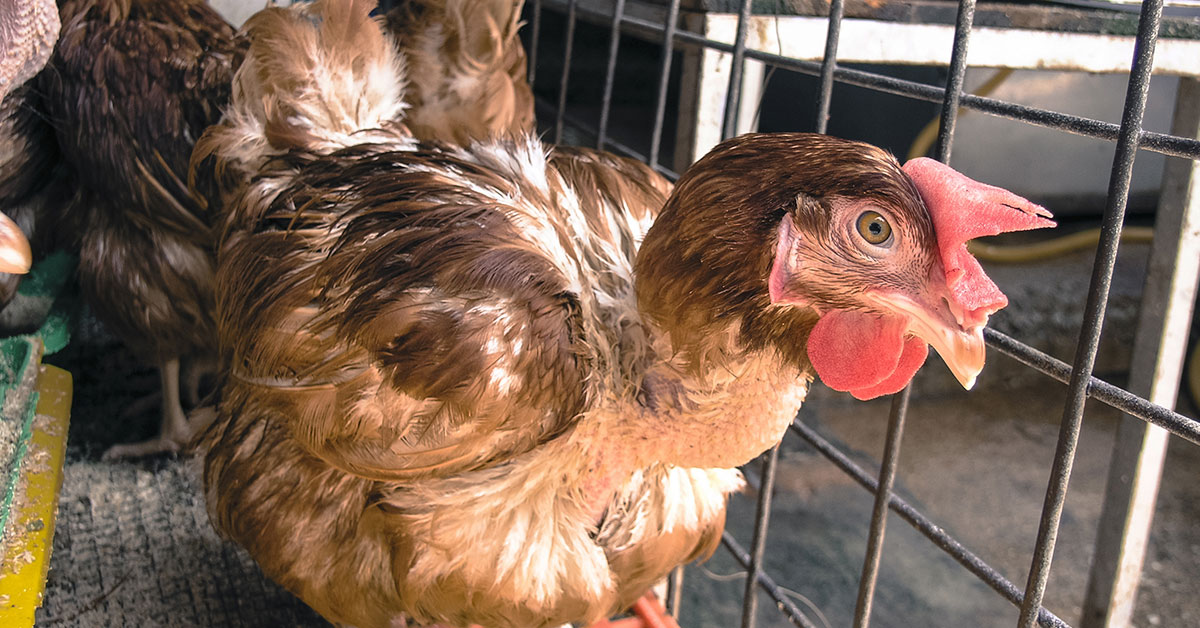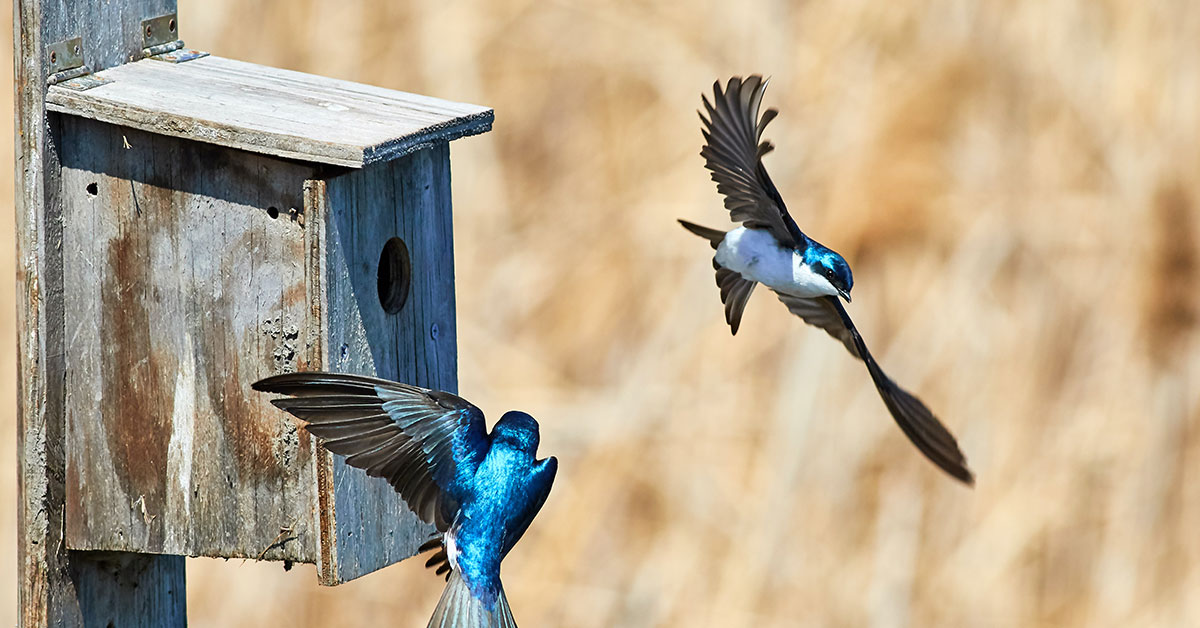Backyard chicken keeping is an increasingly popular hobby that is experiencing a resurgence. More and more cities are rolling back ordinances that prevent keeping chickens on your property, leading to an uptick in interest. There are hundreds of different types of chickens to choose from – hybrids, heritage breeds, crosses. One of those breeds is the Australorp chicken.
All about Australorp chickens
When it comes to picking the right breed of chicken for your home or farm, knowing the basics of the breed will help you make that decision. Let’s break down some of the basics about Australorp chickens.
- Other names: Australian Orpington
- Appearance: Black feathers with a green sheen
- Origin: Australia
- Temperament: Shy, independent
- Noise: Average
- Purpose: Eggs, meat
- Eggs per year: 250+
- Egg color: Brown
- Egg laying age: 16 weeks
- Size: Standard
- Hen weight: 6½-8lb
- Rooster weight: 8½-10lb
- Broody: Average
- Lifespan: 6-10 years
- APA Recognized: Yes
The Australorp chicken is a beautiful, dark breed of chicken that has an unmistakable iridescent green sheen to its feathers, easily seen in the sunlight. This chicken tends to be a shy, independent bird, but with some coaxing, it can become a friendly member of your family.
Like most chickens, Australorp roosters crow and hens make their typical hen sounds. They are considered dual-purpose birds, meaning they are good egg layers and can also be processed for meat. They are considered a standard size, with hens weighing up to 8 pounds and roosters weighing up to 10 lbs. Australorps will lay 250 or more large, brown eggs per year. They begin laying at 16 weeks old.
This American Poultry Association-recognized breed of chicken can live, on average, up to 10 years. Before purchasing adorable chicks at the store, be certain that you are up for the long-term commitment of keeping chickens!
History of Australorp chickens
Australorp chickens are relative newcomers to the heritage chicken world. The breed was developed in Australia, after Orpingtons were imported and crossed with Rhode Island Reds, White Leghorns, Langshans, and although unconfirmed, it’s believed they may have been crossed with Plymouth Rock chickens as well. The result was a strong egg layer, producing more than 300 eggs per year.
In Australia during the early 1900s, farmers would hold egg-laying contests with their Australorps, with the winner being one hen that managed to lay 364 eggs in one year, which is a remarkable number of eggs for one chicken to lay in just a year.
The Australorp fell out of favor beginning in the 1940s and declined precipitously, but has been brought back by backyard chicken enthusiasts.
Temperament
Australorp chickens are known for being shy and independent birds. Any chicken that is properly handled and socialized can become a fun member of the family, though. So even though this breed tends to be more on the reserved side, with patience and care, it can be a friendly, loving pet.
When it comes to roosters, and this applies to just about every breed of chicken, if you treat them with respect and are kind, they will typically return the favor. Knowing their boundaries and reading their body language is important. If, despite all your best efforts, your Australorp rooster won’t stop being aggressive, it may be best to remove him from the flock and look for a nicer rooster.
Purpose
Australorp chickens are considered dual-purpose birds, meaning they can be kept for egg-laying or can be processed for the kitchen table. This breed is a solid egg layer, laying 250 or more large brown eggs per year. They begin laying eggs at 16 weeks old. A full-grown hen will weigh up to 8 pounds, making it a nice-sized bird for the dinner table.
Breed standards
While Australorps can be found in a few different colors, the American Poultry Association only recognizes the black variety of Australorp as breed-standard. The Australian Poultry Association recognizes the white and blue Australorps as acceptable colors for a breed standard designation. South Africa recognizes buff, splash, golden, and wheaten-laced Australorps as breed standard.
A breed-standard Australorp will carry itself tall, standing very upright. Their wattles are red in color, and the comb should stand upright and have no more than 7 points.
Coop and run
Chickens tend to pick up bad behaviors when their coop and run aren’t up to their standards, so making sure you have the appropriate cook and run for your Australorp chickens is vitally important.
Australorps like to have plenty of coop and run space to go about the business of being a good chicken. The more space you can provide them, the happier they’ll be and the more eggs they’ll lay. Australorp chickens should be provided 10 or more square feet of free-range area per bird.
Chicken runs and coops should be kept properly cleaned out and provided fresh straw regularly. At least one nest box per laying hen is preferred, although they can tolerate “buddying up” and laying eggs in the same nest box. These chickens are known to wander some and will occasionally find creative places to lay their eggs.
Common problems
Australorps are a heritage breed, making them hardy and not overly susceptible to health problems, outside of the minor problems most chickens experience. Your chickens should live between 6 and 10 years, though some may live well past 10 years. If you live in a hot climate, it’s very important that your Australorp chickens are given a shady area, as their dark plumage makes them susceptible to heatstroke in direct sun.
Breeding Australorp chickens
Breeding your Australorp chickens doesn’t differ significantly from breeding other types of heritage chickens. Providing your Australorp hens access to an Australorp rooster and allowing nature to take its course will yield healthy, strong chicks. A ratio of 10 hens for every rooster will typically yield good fertility rates. You can allow a broody hen to sit on her eggs or hatch them in an incubator. A quick guide to hatching:
- Incubation time: 21 days
- Incubator temperature: 37.5°C (99.5°F)
- Incubator humidity: 40-50%
- Egg turning: 4 times a day
- Candling eggs: Day 7
- Lockdown Date: Day 17
- Lockdown temperature: 37.2°C (99°F)
- Lockdown humidity: 65%
For more information, check out our comprehensive guide on incubating chicken eggs.
What to feed Australorps
Up until about 16 weeks old, your Australorp chicks should be fed a commercial chick starter feed with 18% protein. This added protein will help your young chicks grow and develop into healthy birds. After 16 weeks, they can be switched to a 16% protein layer feed to support healthy feathers and good egg production. Chickens enjoy being put out to pasture where they can eat grass, bugs, and other plants. They will also gladly eat some fruits, vegetables, grains, and leafy greens. Free-ranging your birds will also cut down significantly on your feed costs.
For more information, check out our comprehensive guide on what foods chickens can and cannot eat.
